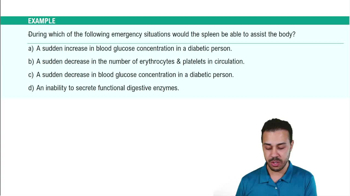Mark the following statements as true or false. If a statement is false, correct it to make a true statement.
b. Renal compensation for acid-base disturbances begins within minutes, whereas respiratory compensation begins within several hours.
 Verified step by step guidance
Verified step by step guidance Verified video answer for a similar problem:
Verified video answer for a similar problem:
